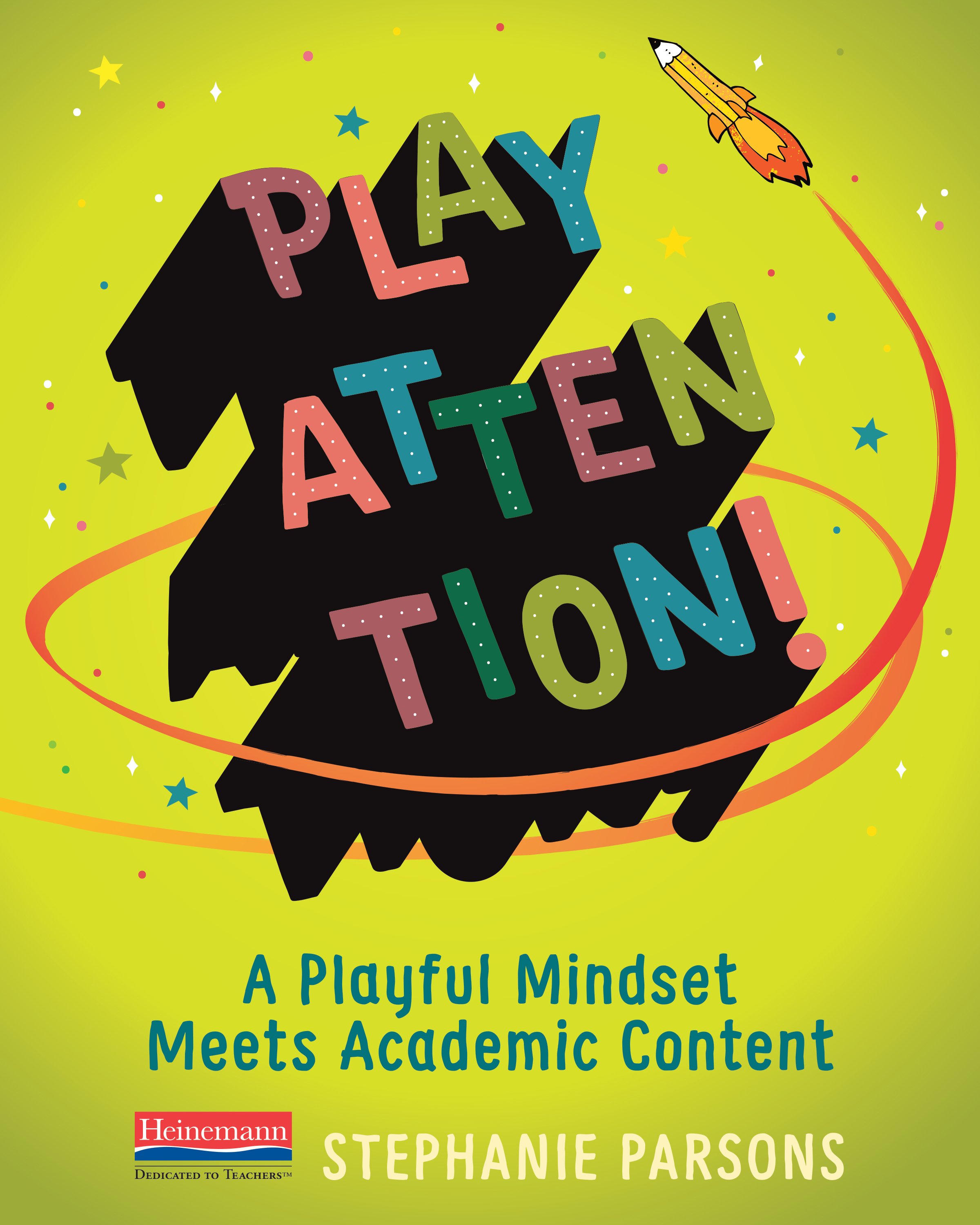
The following is adapted from chapter four of Play Attention! by Stephanie Parsons.
The following is adapted from chapter four of Play Attention! by Stephanie Parsons.
I’d like to give credit to my first fourth-grade class for inventing Language Play. Like many teachers before me, I sensed a need for some teaching around how grammar—the structures according to which we use language to communicate—works. In the middle of a conversation about parts of speech, my students kindly and patiently revealed to me that grammar had always bored them and that they saw little point in being able to identify parts of speech.
I pictured myself as a child, floundering in a swirl of worksheets. Circle all the pronouns! Change the adjectives to adverbs! Underline the compound verbs! Ooh, it’s a crossword puzzle of irregular plurals!!
The challenge as I saw it was to identify a purpose—one that students would buy into—for understanding how the building blocks of language work together to make meaning.
“I see your point,” I said to the students. “Just memorizing parts of speech seems robotic. It gets a lot more interesting, for me anyway, if I think about the jobs certain words are doing in a sentence. That feels like a puzzle, and I’m a detective. ‘Why do I say things the way I do? How do I know?’ Being able to name the kinds of words I use helps me understand better how to use them as a writer.”
Suddenly, someone said, “Hey, what part of speech is because?”
Another student said, “Yeah! And what about if?”
Once again, rescued by student curiosity! We started collecting examples of the words we wanted to learn about, enlisting the help of the school community.
After sorting the input and forming conjectures, we all developed new understandings about phrases and clauses and comma use, not to mention the fact that not all conjunctions are created equal.
For the rest of the year, students paid more attention to how words work together and often asked questions that led to other important inquiries. In fact, we kept a “parking lot” chart to hold questions, which we voted on whenever there was time for further inquiry. During independent project time, individuals or groups might choose one of these to pursue, sharing their results with the class when they were done.
What is Language Play?
Language Play is such a natural part of early childhood learning, but the sense of discovery and wonder seems to fade away as kids get older. The worksheets, grammar drills, and vocabulary quizzes replace joy with stress for both students and teachers. These play experiences are meant to bring that spirit back to language learning. They may first be introduced by the teacher, but when they are successful, they often become directed by students. Many of the best playful explorations I’ve experienced started with offhand comments or questions from students.
Regardless of the aspect of language being explored, Language Play is almost always organized as a whole-class inquiry where we collect information and make sense of it together. Explorations might involve sorting and categorizing words or sentences in an effort to make sense of them. They could involve hunting for and collecting examples of kinds of words or sentences and ordering them in some way, such as intensity of an emotion or complexity of a sentence. Sometimes they start as a game or puzzle I think might spark some interest.
Whatever form it takes, Language Play leads to a deeper understanding of the power of words to change minds, evoke feelings, raise questions, inspire action, or paint vivid images. The aspect of play that seems most evident in Language Play is self-motivation; the students themselves usually come up with an idea of how an exploration should go. Often, small groups or individual students get interested in a question and pursue it on their own during quiet time or as a personal interest project. Language Play is also collaborative and pleasurable, with a greater focus on the process of inquiry than on the final product.
Consider It
Playful exploration with language can support students’ learning in three main ways. It can:
- extend students’ vocabulary in support of reading comprehension and specificity in writing
- engage students in understanding grammar and structure in spoken and written language
- strengthen students’ sense and understanding of humor.
Because some language topics are not immediately interesting to many students, the invitations can be more guided, or the exploration can first be done with the whole class. I don’t really need to show students how to play with plastic polygons, for example, but I may need to show them a few ways to play with words before they envision themselves doing so.
Plan it
For Language Play to be successful, it’s important to have a strong invitation, thoughtfully prepared materials, and some sense of learning targets so that your feedback is both lean and effective. To begin your planning, identify a primary purpose by thinking about something you want to teach in a new way or a problem of practice. This might be something you observe in students, curriculum, or your own past teaching.
Approaching language systems as inquiry, rather than direct teaching, is a great way to make it feel more playful. This means creating a sense of adventure, infusing the explorations with the spirit of “this could go absolutely anywhere!” For example, when you invite students to play, try casting them as detectives with a mystery to solve or scientists with a question to answer.
Students can then work in small groups to gather examples and draw conclusions, or they might sort and categorize information and create criteria for the categories.
If students have language study notebooks, they can record much of their thinking about Language Play there. Just remember, explorations feel more playful when students can manipulate materials first to try out ideas—sorting words in different ways and moving them around to make their thinking visible. For example, grouping all the words that start with con- sparks different thinking that grouping all the words with junc in them. Luckily, the materials for Language Play are fairly simple.
 If you’d like to learn more about how play can add value to what you are already doing in your classroom, download a sample chapter of Stephanie Parsons new book, Play Attention!
If you’d like to learn more about how play can add value to what you are already doing in your classroom, download a sample chapter of Stephanie Parsons new book, Play Attention!
 Stephanie Parsons is a literacy consultant, a former staff developer with Lucy Calkins and the Teachers College Reading and Writing Project, and a former teacher. She loves working alongside teachers and children to discover new ways of teaching. She hopes you will feel the power of transformative teaching along with your students. After attending Yale University and Teachers College at Columbia University, she became a first grade teacher at P.S. 321 in Brooklyn. She is now a reading and writing staff developer working with elementary schools in New York City and across the country.
Stephanie Parsons is a literacy consultant, a former staff developer with Lucy Calkins and the Teachers College Reading and Writing Project, and a former teacher. She loves working alongside teachers and children to discover new ways of teaching. She hopes you will feel the power of transformative teaching along with your students. After attending Yale University and Teachers College at Columbia University, she became a first grade teacher at P.S. 321 in Brooklyn. She is now a reading and writing staff developer working with elementary schools in New York City and across the country.


